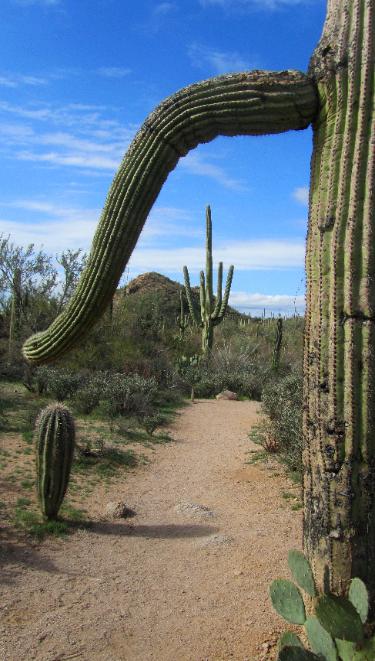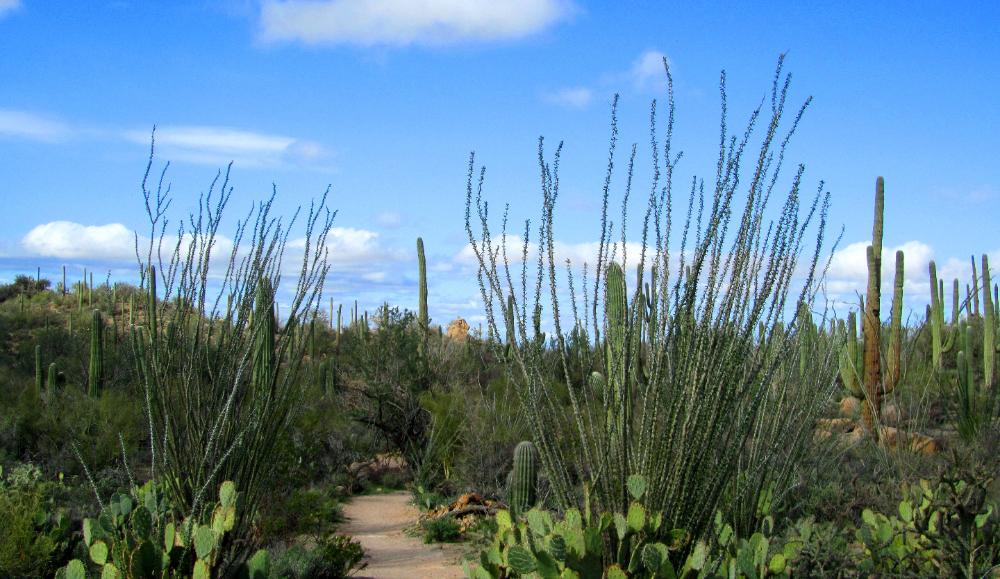
Where We Be
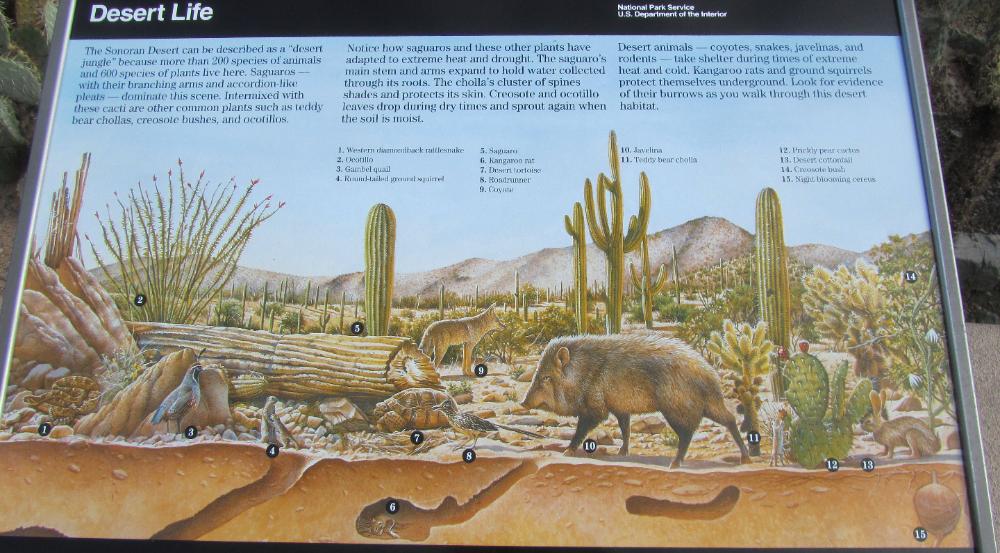
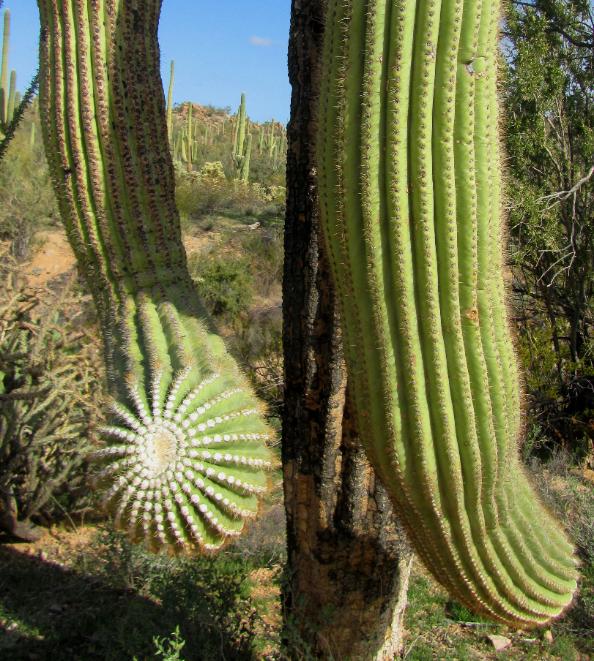
| Saguaros often assume almost human form |
| Saguaro National Park -- Tucson, AZ |
| The Sonoran Desert has been described as a "desert jungle" because it is home to over 200 species of animals and 600 species of plants |
Saguaro National Park is actually divided in two
by the city of Tucson. There is a Saguaro East
and a Saguaro West, and we visited both during
our time in Tucson. Overall we preferred the
western side, which seemed richer in saguaros
and offered more interesting terrain and trails.
Obviously the star attraction at Saguaro
National Park is the saguaro itself. These big
daddies of the cactus world grow surprisingly
tall and take on almost human shapes at times.
In the visitor center we watched a brief slide
show, and at the end of the presentation the
screen rose up and the curtains parted for a
perfectly framed view of Saguaro National Park.
We drove a gravel loop road, called Hohokam
Road, which winds through some of the most
beautiful saguaro countryside in the Sonoran
desert. The desert was alive with birdsong and
vibrant with growth -- saguaro, ocotillo, teddy
bear cholla, pencil cholla, barrel cactus, prickly
pear, palo verde. We hiked along the Valley
View Overlook Trail and also did a brief hike at
Signal Hill to see some geometric petroglyphs.
by the city of Tucson. There is a Saguaro East
and a Saguaro West, and we visited both during
our time in Tucson. Overall we preferred the
western side, which seemed richer in saguaros
and offered more interesting terrain and trails.
Obviously the star attraction at Saguaro
National Park is the saguaro itself. These big
daddies of the cactus world grow surprisingly
tall and take on almost human shapes at times.
In the visitor center we watched a brief slide
show, and at the end of the presentation the
screen rose up and the curtains parted for a
perfectly framed view of Saguaro National Park.
We drove a gravel loop road, called Hohokam
Road, which winds through some of the most
beautiful saguaro countryside in the Sonoran
desert. The desert was alive with birdsong and
vibrant with growth -- saguaro, ocotillo, teddy
bear cholla, pencil cholla, barrel cactus, prickly
pear, palo verde. We hiked along the Valley
View Overlook Trail and also did a brief hike at
Signal Hill to see some geometric petroglyphs.
| After watching a brief slide show about Saguaro National Park, the screen rose and the blackout curtains opened to reveal this splendid view |
| We thought the terrain was more interesting and the saguaros more numerous in Saguaro West -- but both sides of the park are worthwhile if you have time |
| This helpful sign summarizes some of the most common plants and animals in the Sonoran Desert |
| Whitish top of one of the saguaro arms |
| Robin stands next to a saguaro to give a sense of just how big they are. The closeups show the saguaro's protective spines. |
| The tall spiny sticks covered with green growth are called ocotillo. In April they bloom with crimson flowers. |
| Some saguaro arms grown sideways or even downward |
| A saguaro's arm frames the saguaro behind it |
| The petroglyphs were carved into the rocks by the prehistoric Hohokum people more than 1000 years ago |
| We hiked two short trails in Saguaro West. The first was to Valley View Overlook, and the second to Signal Hill to see the ancient petroglyphs shown here. |
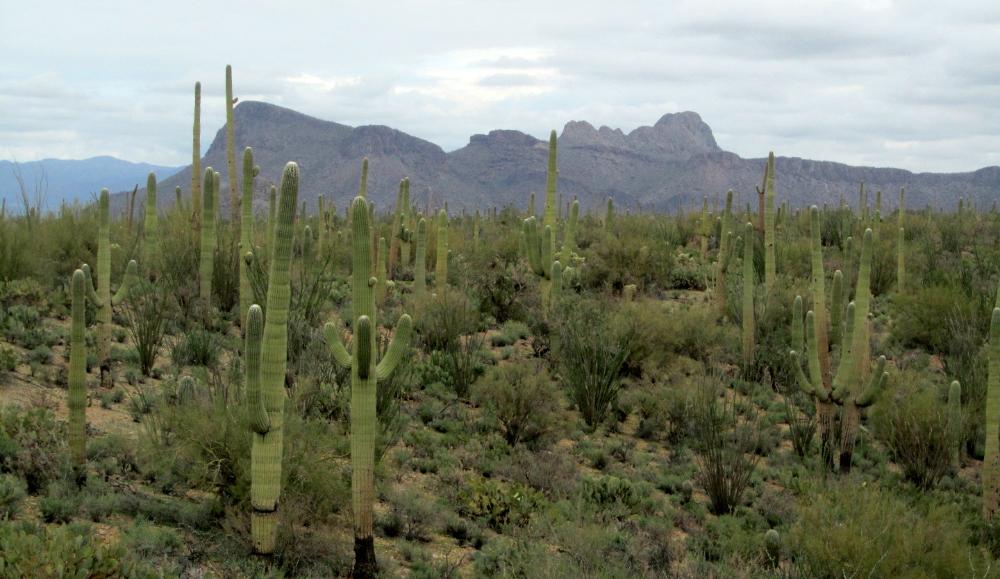
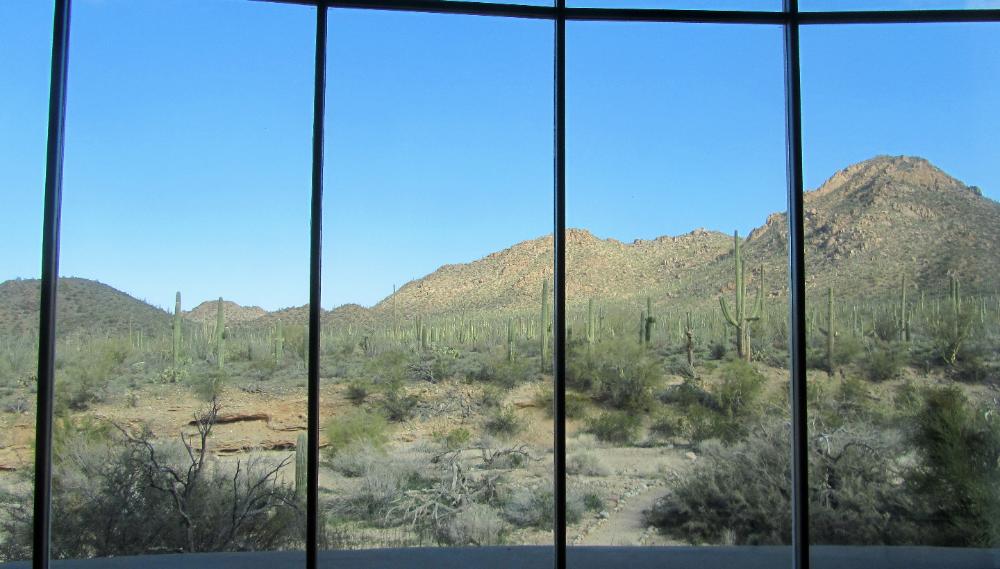
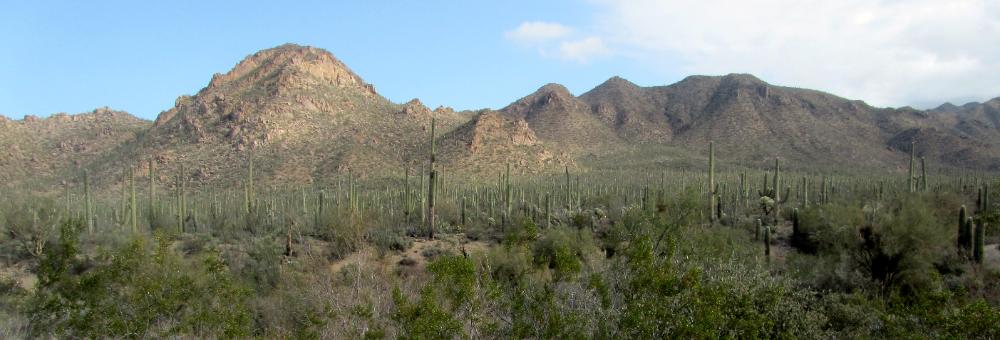
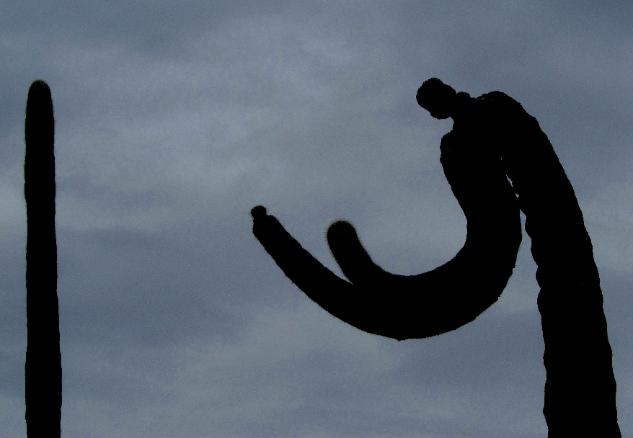
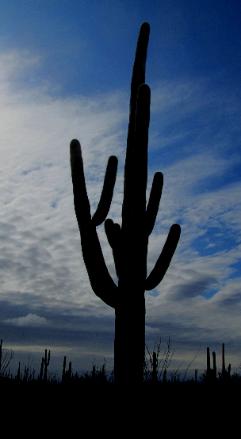
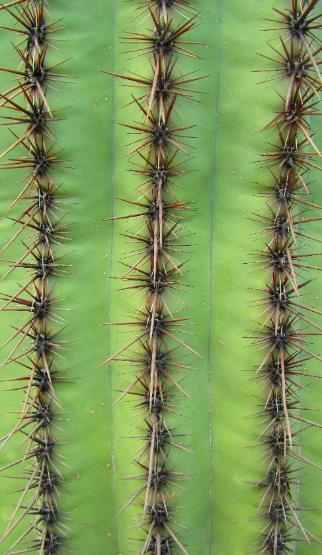
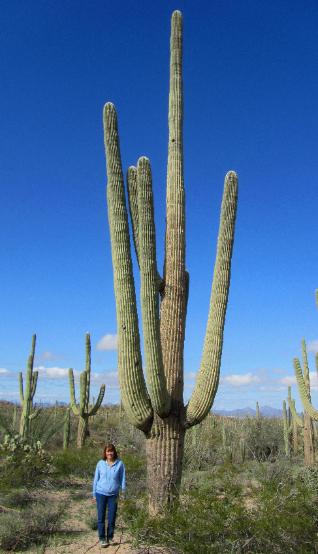
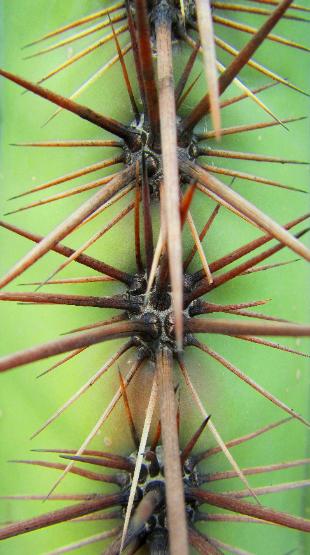
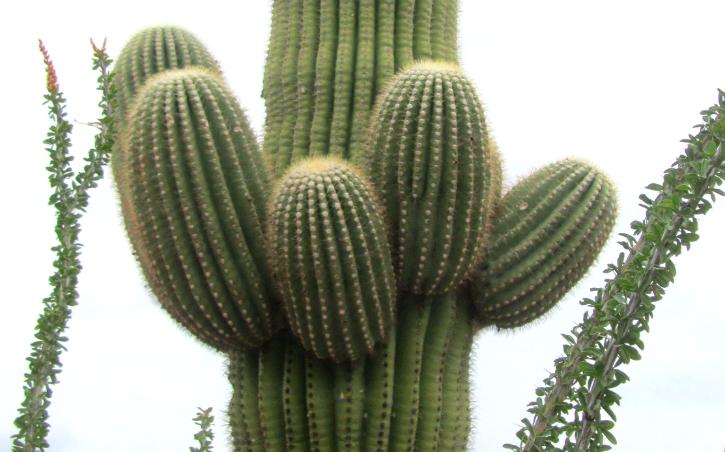
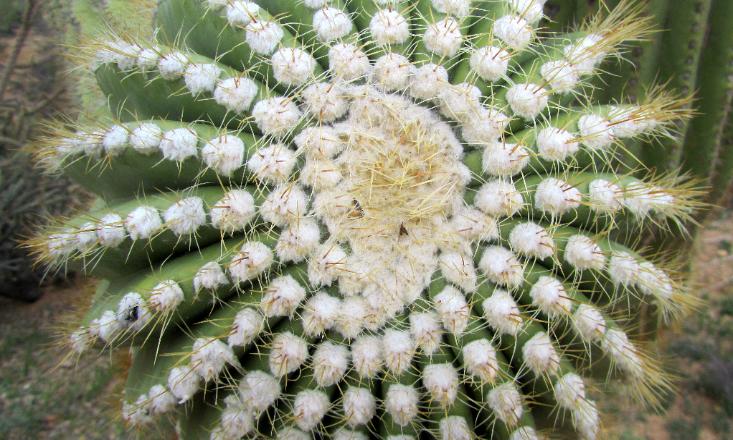
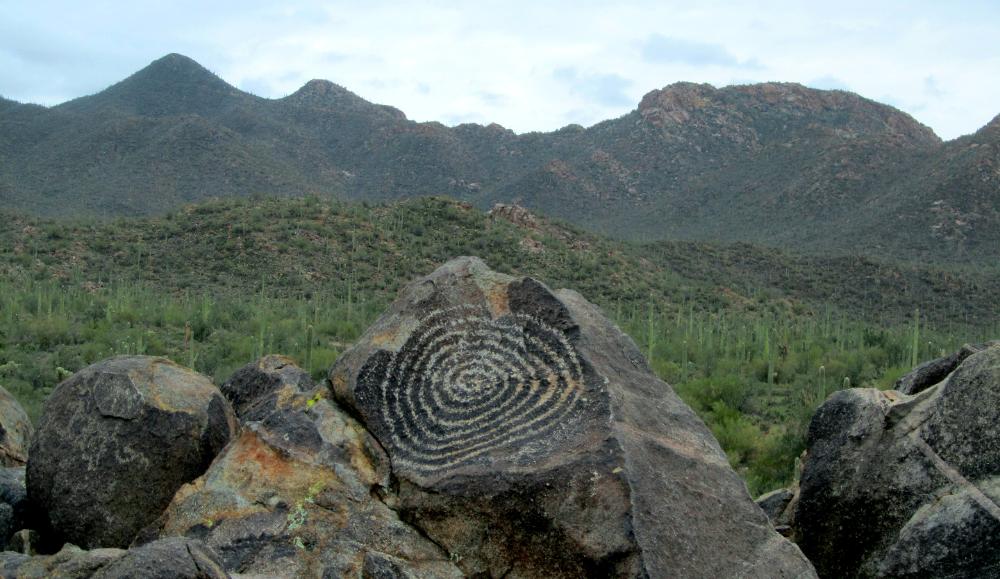
| Saguaro silhouette |
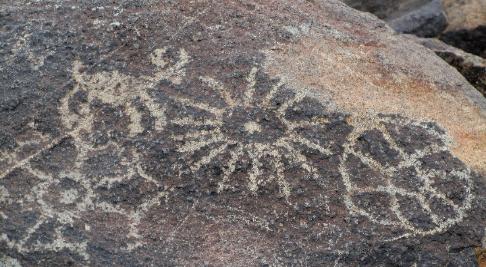
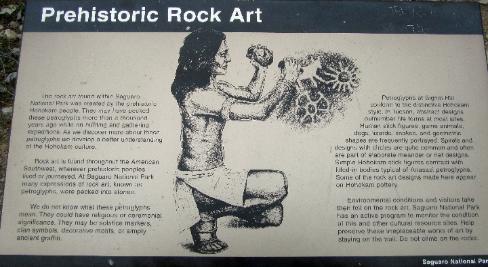
| Saguaros take up to 75 years before they start to grow "arms" like these. Saguaros can live to be 150 to 200 years old. |
